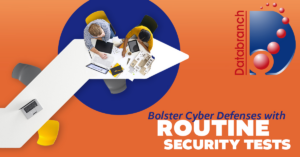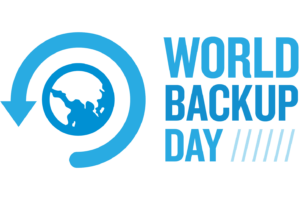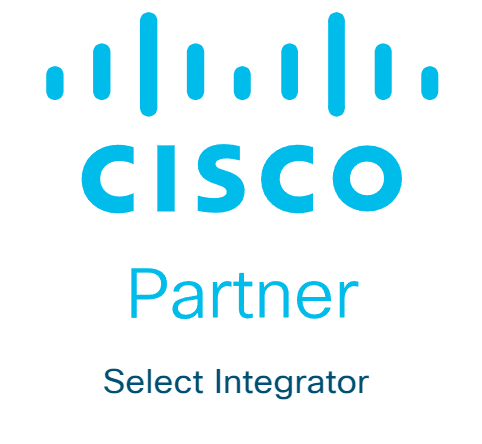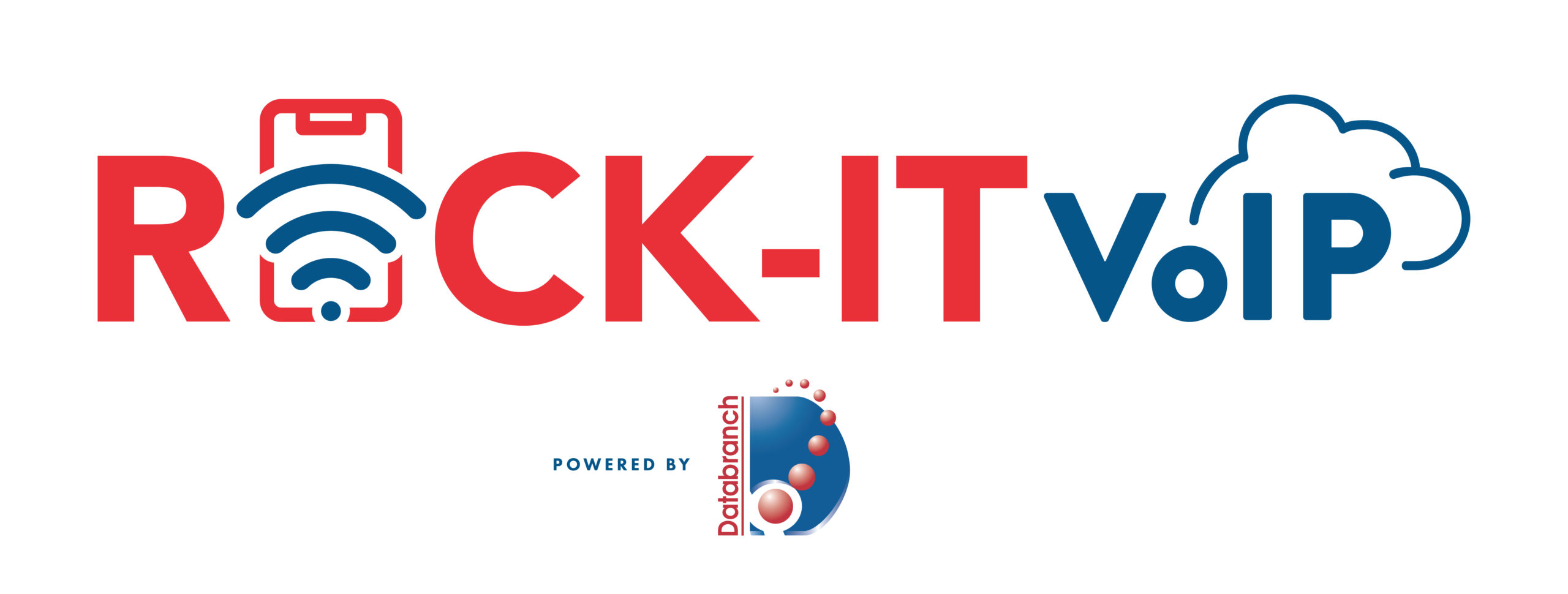
In today’s business landscape, data isn’t just power — it’s the very lifeline that fuels business decisions, drives innovations and shapes strategies. However, businesses often find it difficult to effectively manage the vast amounts of data they hold, and that’s where data management comes into play.
Simply put, data management is all about collecting, storing and analyzing data in the most efficient way possible to help businesses like yours make informed decisions, optimize operations and ensure cybersecurity.
In this blog, we’ll look at the consequences of improper data management and discuss how businesses like yours can effectively deal with these challenges.
Potential Consequences of Improper Data Management
Failure to manage your data effectively can lead to the following consequences, including missed opportunities, inefficiencies and even business-ending events.
Poor Decision-Making
Imagine navigating the roads using a faulty map. You’re bound to end up in the wrong place. Without accurate data, you will be charting a flawed business trajectory toward wasted resources, missed market opportunities, and ultimately, strategic missteps that hurt your business.
Reduced Efficiency
If your employees are working in siloed systems, drowning in a sea of duplicate data and wasting precious man-hours sorting the mess, you won’t have time for productive work. Ineffective management erodes productivity and keeps your business from growing.
Increased Risk
A leaky boat is bound to sink. Poor data management can sink your business by exposing you to security risks and even data breaches that could result in non-compliance with regulations, leading to legal issues and fines.
Implementing a well-thought-out cyber risk management strategy can significantly reduce overall risks and strengthen your cyber defenses. Visit us here to learn more.
Decreased Customer Trust
Mishandling of customer data is like breaking a sacred covenant. It fractures your reputation and erodes trust, leading to client disengagement and a tarnished brand image that could be difficult to rebuild.
Competitive Disadvantage
Think of a large, inaccessible gold mine. Now, imagine all that untapped precious metal. That’s exactly what businesses that lack data management strategies resemble. If you fail to leverage data, you are bound to lose ground to businesses that use analytics and AI to unlock groundbreaking insights and fuel future success.
Increased Costs
Poor data management slowly eats away at your revenue and bloats your expenses. You end up incurring expenses on storing duplicate or irrelevant data that do not contribute to your business growth.
Data security incidents can also bring business to a grinding halt, costing a business thousands. Do you know what the cost of downtime is for your business? Visit our Recovery Time Calculator if not.
How We Can Help with Data Management
The good news is that you can partner with trusted guides who are equipped with the expertise and resources to transform your hidden data liabilities into revenue-churning assets.
Here’s how an IT service provider can put you on the road to success:
1. Never Worry About Data Loss
Adopting a comprehensive backup and business continuity and disaster recovery (BCDR) strategy is a necessary addition to every data management plan.
Databranch offers our BCDR solution from Datto, the leader in Total Data Protection. Not only will the Datto backup all your data to the device itself, but it will also backup everything to 2 separate offsite cloud storage locations.
So, in the event that the local device is destroyed, you can still access your information even from a remote location.
With Datto you will receive daily backup verifications and screen shots of your virtual servers give you peace of mind and ensure that your backup data is working and accessible to you when you need it.
2. Get Advanced Protection
Databranch is here to keep your business safe from cyberthreats that are lurking in the dark. We allow you to focus on your business by knowing that your assets are being protected with advanced security measures that can repel sophisticated attacks.
Our managed client platform provides a comprehensive suite of security tools that safeguard your network and bolster your cyber defenses. Reach out to our team today to learn more.
3. You Have Access to Top IT Experts
Imagine having a team of IT experts working for you without breaking the bank. Data problems can bring your business to a halt, but with the help of Databranch, you can easily manage or resolve any data-related issues anytime, anywhere.
4. Always Stay Compliant
Data compliance regulations related to privacy and security are always evolving. It can be tough to keep up with rules and regulations while managing the day-to-day activities of your business. However, Databranch provide some guidance which will help you stay ahead of the curve and ensure you meet the stipulated regulations.
5. Tailored Strategies that Lead to Success
Tailor made data management strategies will help meet your business goals and allow you to transform your data into a strategic asset.
Secure Your Future
Your data is your gold mine with precious untapped potential. However, navigating the tricky data management terrain on your own can be challenging — and that’s where Databranch comes in. Consider partnering with us so we can help you unlock the power of data for your business.
Reach out to Databranch today at 716-373-4467 option 6, or [email protected] to schedule a meeting with one of our experienced team members.
You can also download our eBook today to start the process of turning your data into a powerful engine for success.
Read More

Businesses today face a range of cybersecurity threats, from social engineering attacks like phishing, to sophisticated ransomware. For business leaders like you, protecting your network is crucial since it is the lifeline of your business.
Any vulnerability in your network can compromise your sensitive data, operational integrity, and stakeholder trust. That’s why you must understand and address these threats through proactive measures, such as routine security scans and network testing.
In this blog, we’ll discuss the role of a robust network and demystify network testing intricacies.
Benefits of Routine Security Tests
A security test typically assesses the effectiveness of an organization’s security measures and protocols. Here are some of its benefits:
Identifies Vulnerabilities:
Through regular security scans, you can easily identify weaknesses in your system and proactively address potential threats before they can be exploited by cybercriminals.
It is important to conduct vulnerability assessments regularly, at least every quarter if not more frequently. This is due to the dynamic nature of information technology. Many changes occur on a day-to-day basis that can introduce new exposures associated with information security.
Security shortcomings found during a vulnerability assessment can almost always be fixed. Many times, the fixes are very easy to accomplish.
Assesses Security Measures:
Regular security tests allow you to establish continuous monitoring of security protocols. This helps you gauge the effectiveness of your security measures and make necessary changes when needed.
Here at Databranch, our Managed Service plans offer proactive monitoring tools that helps us detect threats before they can impact your network. They also provide increased protection from malware, ransomware, and phishing compromises.
All Databranch Comprehensive Care and Foundation Security clients also have scheduled automatic patching and Windows updates on their devices.
Ensures Compliance:
Security tests help align your security practices with industry standards and reduce the risk of your business running into any compliance issues.
Prevents Data Breaches:
Through routine security scans, you can easily identify and address vulnerabilities and fortify your organization against unauthorized access and potential data breaches.
Optimizes Incident Response:
Regular testing helps you refine and improve your incident response plan and ensures your security preparedness plan is effective and up to date. Simply put, being able to restore and recover important business data after a disaster is no longer enough.
Intelligent Business Continuity is Databranch’s answer to not only ensuring that your data is restored to its former state, but restored quickly, with little to no downtime or interruption to your business.
Strengthens Resilience:
Regular security testing helps you build a solid security posture, enhancing your organization’s ability to endure and recover from cyberattacks.
Helps Avoid Financial Losses:
By taking proactive measures to identify and address security risks, you can prevent potential financial losses associated with data breaches, legal implications and operational disruptions. Visit our website here to learn just how costly it could be if your business were to experience a disruption.
Fosters Continuous Improvement:
Regular testing fosters a culture of continuous improvement, allowing you to adapt and evolve your security strategies based on emerging threats and industry best practices.
Essential Security Testing Methods
By leveraging security testing methods, you can assess the effectiveness of your organization’s security measures. Here are two of the most efficient methods that can help you build a robust cybersecurity landscape for your business:
Penetration Testing:
Also known as pen testing, this involves simulating real-world cyberattacks on an organization’s network. The simulations provide valuable insights that help organizations identify and address security gaps before they can be exploited by cybercriminals.
Vulnerability Assessments:
This method involves using automated tools to scan networks, systems and applications for known vulnerabilities, misconfigurations or weaknesses. It helps organizations build a robust cybersecurity posture by proactively prioritizing and addressing potential threats before they can do any harm.
Boost Security Effortlessly
When it comes to the security of your network, you can’t take any chances. That’s why you should partner with Databranch and let the experts handle the heavy lifting. We can efficiently manage security testing for you and ensure your digital defenses stay protected. Contact us at 716-373-4467 option 6, or [email protected] for a no-obligation consultation and take the first step towards a more secure future.
Download our infographic today for a condensed roadmap on how routine security scans can optimize your network!
Read More

Data loss disasters come in many forms, ranging from full-scale natural calamities to cyberattacks and even simple human errors. Disasters can bring businesses to a grinding halt. Apart from financial and reputational damage, failing to protect valuable data can also result in expensive lawsuits.
That’s why businesses, regardless of size, must have a backup and disaster recovery (BCDR) plan. By implementing a foolproof BCDR, you can quickly get your business back up and running should disaster strike. It will also help you comply with governmental and industry regulatory frameworks.
In this post, we’ll break down the different types of data loss disasters and outline the key BCDR components that can help you make it through a disruptive event with flying colors.
The Many Forms Data Loss Can Take
Let’s analyze the various types of data loss disasters that can hurt your business:
Natural Disasters
This covers everything from storms, hurricanes, floods, fires, tsunamis and volcano eruptions. In most cases, you can expect infrastructural damages, power failure and mechanical failures, which could then lead to data loss.
Hardware and Software Failure
Software and hardware disruption can cause data loss if you don’t have BCDR measures in place. These disruptions could be due to bugs, glitches, configuration errors, programmatic errors, component failures, or simply because the device is at its end of life or the software is outdated.
Unforeseen Circumstances
Data loss can happen due to random, unexpected scenarios. For instance, a portable hard disk held by an employee could get stolen, your server room may have a water leak because of a plumbing issue, or there could even be a pest infestation in one of your data centers.
Human Factor
Human errors are a leading cause of data loss incidents. These errors range from accidental file deletions, overwriting of existing files and naming convention errors to forgetting to save or back up data or spilling liquid on a storage device.
Cyberthreats
Your business may fall prey to malware, ransomware and virus attacks, which could leave your data and backups corrupt and irrecoverable. Additionally, data loss could be caused by malicious insiders with unauthorized access, which often goes under the radar.
Allowing your employees to have administrative privileges can leave holes in your cybersecurity, visit us here to learn more.
Key components of BCDR
Here are a few crucial things to keep in mind as you build a robust BCDR strategy:
Risk Assessment
Identify potential risks and threats that would impact business operations. Measure and quantify the risks to tackle them.
Databranch believes that identifying the right level of security to protect your IT infrastructure begins with a comprehensive security assessment that includes vulnerability/penetration evaluation, assessment reporting and security policy creation.
You can visit our website here to request your FREE baseline security assessment.
Business Impact Analysis (BIA)
Assess the potential consequences of a disruptive event on critical business functions and prioritize them in the recovery plan.
Continuity Planning
Implement procedures to resume critical business operations during disruption, with minimal downtime. Databranch offers our BCDR solution from Datto, the leader in Total Data Protection. Not only will Datto backup all your data to the device itself, but it will also backup everything to 2 separate offsite cloud storage locations.
So, in the event that the local device is destroyed, your business can be up and running in just minutes.
Disaster Recovery Planning
Plan a well-defined business resumption plan to recover critical IT functions and data following a disruptive incident. With a recovery plan in place, many businesses may simply never recover.
Do you know the cost of downtime for your business? If not, visit our website here to view our Recovery Time Calculator.
Testing and Maintenance
Periodically test your disaster recovery and backup plans to ensure they can be recovered in a disaster. If they fail, you can work on the enhancement.
Wondering Where to Begin?
Developing and implementing a BCDR plan on your own can be daunting. However, we can help you build the right BCDR strategy for your business profile.
Databranch has the knowledge and experience to take care of your backup and BCDR needs. Get in touch with us today at 716-373-4467 option 6, [email protected].
You can also download our infographic below to learn more about planning for potential data loss.
Read More

Even on a good day, being a business owner is challenging. Apart from dealing with and effectively solving multiple problems, you also need the foresight to arm your business with the right tools and solutions to tackle any issues that might arise later.
One issue you should always prioritize is data loss/data corruption and business disruption that cause downtime and productivity dips. Remember that data loss/data corruption and business disruption could happen due to various reasons, such as:
- Natural calamity
- Hardware failure
- Human error
- Software corruption
- Computer viruses
Adopting a comprehensive backup and business continuity and disaster recovery (BCDR) strategy is the best way to tackle this problem.
What is a comprehensive backup and BCDR strategy?
A comprehensive backup and BCDR strategy emphasizes the need for various technologies working together to deliver uptime. It even highlights technologies associated with cybersecurity. A robust strategy:
Protects All Systems, Devices and Workloads
Managing all systems, devices and workloads efficiently, securely and consistently can be challenging. Mistakes, errors, mishaps and outright failures across backup and recovery systems could happen at any time, leading to severe downtime or other costly business consequences.
That’s why it’s essential to have a reliable and secure solution to back up and protect business data as well as business systems, devices and workloads.
Ensures the Integrity, Availability and Accessibility of Data
The complexity of IT, network and data environments that include multiple sites — cloud, on-premises and remote — makes monitoring and protection difficult. It negatively affects the integrity, availability and accessibility of information and all IT network assets. That’s why it’s a best practice to simultaneously deploy tools or systems that cover all IT and network infrastructure (remote, cloud and on-site) with the same level of protection and security.
Enables Business Resilience and Continuity
A comprehensive and realistically achievable backup and BCDR strategy prioritizes, facilitates and ensures the continuity of business operations. It represents a business’ resiliency against downtime or data loss incidents.
Prioritizes Critical Protection and Security Requirements Against Internal and External Risks
No backup or BCDR solution can be effective if your business does not proactively identify and mitigate internal and external risks. You need tools that focus on internal and external threats through constant monitoring, alerting and tactical defense to empower your backup and BCDR strategy.
Databranch offers a suite of cost-effective computer managed services that proactively monitor and support your network and Technology infrastructure.
Optimizes and Reduces Storage Needs and Costs Through Deduplication
With the amount of data skyrocketing day after day, it poses serious storage and budgetary challenges for businesses. What makes things worse is the existence of multiple unnecessary copies of the same files.
Therefore, adopting the deduplication process can identify data repetition and ensure that no similar data is stored unnecessarily.
Manages Visibility and Unauthorized Access and Fulfills Data Retention Requirements
Your business data must never be visible to every employee in the same way. There must be policies and tools to ensure that an employee accesses only data essential to completing their tasks. Click here to reach more on the risks associated with Administrative Privileges.
Also, unauthorized access must be identified and blocked immediately. This is crucial not only for the success of backups and BCDR but also for maintaining compliance with all regulatory mandates related to data protection and retention.
Comprehensive Backup and BCDR for Your Business
By now, it must be clear to you that adopting a comprehensive backup and BCDR strategy is not an option but a necessity. An occasional, severe data loss incident or disruption could even open the gates for your competitors to eat into your profits and customer base.
You must do everything possible to bring all the right tools and strategies together so your business can operate seamlessly, even in the face of chaos.
Databranch offers our BCDR solution from Datto, the leader in Total Data Protection. Not only will the Datto backup all your data to the device itself, but it will also backup everything to 2 separate offsite cloud storage locations.
So, in the event that the local device is destroyed, you can still access your information even from a remote location.
With Datto you will receive daily backup verifications and screen shots of your virtual servers give you peace of mind and ensure that your backup data is working and accessible to you when you need it.
Are you ready to approach the concept of comprehensive backup and BCDR practically? It isn’t as difficult as you might think.
Databranch has the knowledge and experience to take care of your backup and BCDR needs. Get in touch with us today at 716-373-4467 option 6, [email protected], or click here to learn more.
Read More

March 31st is World Backup Day, an annual date celebrated by the tech industry to highlight the importance of protecting your data and keeping your systems secure. Yet, many businesses don’t have backup and recovery solutions in place for their critical business data.
It is common for organizations to invest in preventative cybersecurity defenses. In fact, most organizations have technologies such as firewalls and anti-virus software that are designed to stop a cyber-attack.
These controls certainly serve a purpose in fighting the war against cybercrime and should not be discounted but the reality is, defending your business from cyber-attacks is an incredibly hard task to do.
Hackers are anonymous, perimeters are not physical, attacks are sophisticated, and the volume of cyber assaults launched every day is astounding. Defending cyber-attacks is a little like entering a cage fight blindfolded with one arm tied behind your back.
Despite the best defensive efforts, you will get hit.
If you do not regularly backup critical data and systems, then you must start doing so immediately.
With Datto, your company can be up and running in just seconds after a disaster.
Instant virtualization combined with the ability to backup as frequently as every 5 minutes means that with the click of a button, your Datto device recreates your computers and servers so your business can resume as if nothing had ever happened.
Our Datto devices utilize a reliable data backup redundancy solution by storing your critical business data onto your local Datto device as well as 2 offsite cloud storages. Datto even includes ransomware detection by running analytics to compare the two most recent backup snapshots to identify ransomware footprints.
Have you updated your backup process for today’s threats? Contact us today at 716-373-4467 x115 or [email protected] to schedule a chat about data backup and protection.
You can also visit our website here to learn more about our data backup and recovery solutions.
Read More
 IMAGE SOURCE: https://pixabay.com/photos/cyber-security-internet-network-4610993/ An effective way to bolster your business’s data security is to work with a Managed Service Provider (MSP) or I.T. Service Provider (ITSP) like Databranch. They address network vulnerabilities to prevent cyber criminals from exploiting them.
Besides monitoring and organizing your servers, a Managed Service Provider (MSP) or I.T. Service Provider (ITSP) plays a pivotal role in the cybersecurity program of your business. They implement several strategies to shield your network from attacks and protect your data.
For instance, many providers use email authentication protocols to monitor your server’s vulnerabilities. They can keep users from accidentally accessing malicious websites by determining spam emails containing malware or viruses. This results in enhanced system security.
Another common practice is training your employees to ensure they follow the highest security standards. This is especially important if you have remote team members since there’s no way to keep track of their activities. To tackle this issue, an MSP or ITSP teaches your staff how to operate safely to avoid harm to your company’s infrastructure and reputation.
On top of that, an MSP or ITSP can neutralize various threats due to their proactive approach. They offer several tools such as firewalls and endpoint detection to control the traffic and stave off cyber attacks. Also, they can install antivirus software and email security to stop intrusion attempts.
Needless to say, an MSP or ITSP can shield you from a wide array of cybersecurity issues. But it’s vital to work with the right provider.
To ensure this happens, you should look for and abide by the best practices for an MSP or ITSP in the cybersecurity space. This article will examine what they are.
THE 8 BEST PRACTICES
PRACTICE #1 – ENFORCE MULTI-FACTOR AUTHENTICATION (MFA)
Cybercriminals are becoming proficient at accessing your credentials, so it’s critical to enable MFA for all your users.
It consists of three elements: a password, security token, and biometric verification. Consequently, if attackers breach one security layer, they’ll still have to do a lot of digging to access your information.
PRACTICE #2 – MAKE PATCHING A PRIORITY
Application and operating system exploits are common. Hackers target them to access your system and compromise your data, but you can prevent this through regular patching.
Making sure your system is up to date with the latest security standards decreases the risk of exploitation.
PRACTICE #3 – CONDUCT REGULAR CYBERSECURITY AUDITS
An MSP or ITSP must be aware of on boarding, off boarding, and lateral movements within an organization. This warrants frequent cybersecurity audits to assess the competency of your team.
Many MSPs or ITSPs hire third-party companies to perform their security audits. They can detect if a person who no longer needs access to the network still has it. It’s something that can endanger the client’s information, especially if the individual is a former employee.
Conducting regular audits mitigates this risk. It enables an MSP or ITSP to implement some of the most effective access privilege limitations:
- IP restrictions – These security measures ensure that only users who can access your local network can utilize remote administration tools.
- RMM software updates – Software vendors typically dispatch updates to fix vulnerabilities and patch numerous security gaps.
- RDP (Remote Desktop Protocol) Security – This Windows native administration tool reduces the chances of ransomware attacks in your organization.
PRACTICE #4 – HAVE AN OFF-SITE BACKUP
Backups are crucial for tackling malicious activities and ensuring operational continuity after cyber attacks.
They also help address whether the company and its clients can access the latest version of their data and applications. This feature is vital for enterprises that must adhere to compliance requirements, including PCI-DSS and HIPAA.
But besides implementing on-site backups, your MSP or ITSP should also set up off-site versions. If attackers compromise your RMM software, they can most likely reach on-site backups, too.
So, to avoid disasters, businesses should have an off-site backup accessible to only a few people. It should also be offline for greater security.
(Databranch is a proud Datto Diamond Partner and can help your organization implement a true business continuity/data protection solution for your organization.)
PRACTICE #5 – INCORPORATE LOG MONITORING
 IMAGE SOURCE: https://pixabay.com/photos/startup-business-people-students-849804/ Log monitoring is analyzing your logs for potential glitches. As an MSP or ITSP scrutinizes your records, they can detect traffic from harmful sources and provide a clear idea of threat patterns. And over time, they can deploy countermeasures to seal these gaps.
For example, cybersecurity experts use reliable security information and event management (SIEM) tools. They facilitate scanning through piles of information to enable faster threat detection.
PRACTICE #6 – LAUNCH PHISHING CAMPAIGNS
Phishing cyber criminals target your team members with emails or text messages, posing as legitimate institutions to steal your data. Unfortunately, most attacks succeed because of human error, meaning your MSP or ITSP should be aware of and monitor employees’ behavior.
Setting up fake phishing campaigns is a great way to test your team’s ability to respond to phishing attacks. It allows you to pinpoint and improve inadequate responses, bolstering data security.
To learn more about Databranch’s Breach Prevention Platform which includes monthly simulated phishing attempts and continuous end-user security awareness training, click here or email: [email protected]
PRACTICE #7 – CHOOSE YOUR SOFTWARE CAREFULLY AND SECURE ENDPOINTS
From small browser plugins to large-scale business systems, be sure your providers take data protection and cybersecurity seriously. Learn about their commitment to these aspects before purchasing their application.
Furthermore, employ web filtering tools, antivirus software, and email authentication to fend off ransomware attacks through malicious emails. Ensure each endpoint and your virus definition library are secure and up to date with the latest standards.
PRACTICE #8 – SET ALERTS AND DOCUMENT EVERYTHING
An MSP or ITSP that configures their systems to receive alerts upon system changes can work proactively and tackle threats early on. Many platforms automate this process through rules templates, personalization, and direct tickets to the PSA. This eliminates manual digging, saving precious time.
Another useful strategy is to document your cybersecurity information, such as your defense mechanisms, emergency guidelines, and disaster recovery plans. You should also review it regularly to help preempt cyber attacks.
CYBERSECURITY IS PARAMOUNT
While digitalization has significantly streamlined your operations, it’s also made you more susceptible to data theft.
To ensure cyber criminals don’t get their hands on valuable information and ruin your reputation, your MSP or ITSP needs to adopt well-established security practices.
But if your provider hasn’t introduced off-site backups, regular patches, and employee training, you’re not getting your money’s worth. Hence, you may be frustrated since your provider isn’t delivering the necessary results.
This makes you a sitting duck for cyber criminals. You need to resolve the issue as soon as possible.
Databranch can help you do so. Reach out to us for a quick 15-minute chat at 716-373-4467 x 15 and our tech experts will do their best to show you a way out of your cybersecurity dead end.
Article used with permission from The Technology Press.
|
Read More















